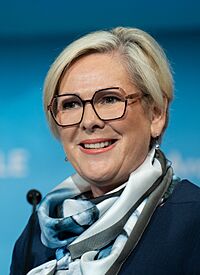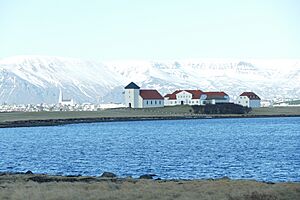President of Iceland facts for kids
Quick facts for kids President of Iceland |
|
|---|---|

|
|

|
|
| Office of the President | |
| Style |
|
| Member of | State Council of Iceland |
| Residence | Bessastaðir |
| Seat | Garðabær, Iceland |
| Appointer | Popular vote (plurality voting) |
| Term length | Four years,
no term limits
|
| Constituting instrument | Constitution of Iceland (1944) |
| Precursor | King of Iceland |
| Formation | 17 June 1944 |
| First holder | Sveinn Björnsson |
| Succession | Line of succession |
| Salary | €289,000 annually |
| Website | |
The president of Iceland (Icelandic: Forseti Íslands) is the head of state of Iceland. This means they are the official leader and symbol of the country. The current president is Halla Tómasdóttir, who won the 2024 election.
The president does not directly run the country's daily government. Instead, they serve as the head of state. They formally appoint new governments and their ministers.
The president is chosen by a public vote for a four-year term. They can be re-elected as many times as the people choose. Historically, if a president decided to run for another term, they often won easily. However, the 2012 election was different, with Ólafur Ragnar Grímsson winning by a smaller margin.
Iceland made history on August 1, 1980. That's when Vigdís Finnbogadóttir became president. She was the first elected female head of state in the world.
The official home of the president is Bessastaðir. It is located in Garðabær, which is a town close to the capital city, Reykjavík.
Contents
History of the Presidency
When Iceland became a republic in 1944, it adopted a new constitution. This constitution replaced the position of the King of Iceland with the president of Iceland. The first president was chosen by the Parliament, which is Iceland's main law-making body.
What Does "Forseti" Mean?
The Icelandic word for president is forseti. This word comes from Old Norse and means "one who sits foremost" or literally "fore-sitter." It is also the name of a god in Norse mythology. This god, Forseti, is known for justice and solving disagreements.
President's Powers and Duties
The president of Iceland has several important roles. These roles are outlined in the country's constitution.
Executive Powers
The president has powers related to the government's daily operations.
Appointing the Cabinet
The president chooses the ministers who form the Cabinet of Iceland. They decide how many ministers there will be and what jobs each minister will have. Ministers cannot simply quit; the president must officially remove them from their positions.
Even though the president has executive power, they are not responsible for how it is used. Any action the president takes must also be signed by a minister. This minister then takes political responsibility for that action.
After general elections, the president plays a key role. They choose a party leader who they believe can form a government supported by most of the Parliament. This leader then starts talks to create a new government. Some past presidents, like Sveinn Björnsson and Ásgeir Ásgeirsson, were very active in forming governments. Others, like Kristján Eldjárn and Vigdís Finnbogadóttir, were more neutral.
State Council Meetings
The president and the Cabinet meet together in the State Council. During these meetings, the Cabinet must tell the president about important state matters. They also inform the president about new laws they plan to propose. The Cabinet can also suggest calling, pausing, or ending Parliament meetings.
Dealing with Legal Cases
The president has the power to stop a legal case from continuing. They can also grant pardons, which means forgiving someone for a crime. They can also grant amnesty, which is a general pardon for a group of people.
Legislative Powers
The president also has powers related to making laws.
Working with Parliament
The constitution states that the president and the Parliament work together to create laws. The president signs bills that Parliament has passed to make them official laws. The president can also choose not to sign a bill. This is like a veto. If the president vetoes a bill, it still becomes law unless Parliament decides to withdraw it. However, if it's not withdrawn, it must then be put to a public vote in a referendum.
Ólafur Ragnar Grímsson, who was president from 1996 to 2016, was the only president to use this veto power. He did it three times. This power was originally meant to be used only in very serious situations.
The president can also suggest new bills and ideas to Parliament. Parliament must then consider these suggestions. If Parliament is not meeting, the president can issue temporary laws. These temporary laws must follow the constitution. They become invalid if Parliament does not approve them once it meets again. No president has ever used these powers to suggest bills or issue temporary laws.
The president can also allow exceptions to certain laws. This power has not been used by any president yet.
Parliament Sessions
The president calls Parliament to meet after general elections. They also formally close Parliament. The president can temporarily pause Parliament meetings. They can also move the meetings if they think it's necessary. Every year, the president officially opens all regular sessions of Parliament.
Ceremonial Duties
The president is the main leader of the Order of the Falcon. This is an important Icelandic honor.
President's Salary
The president receives a monthly salary of 2,480,341 ISK. The constitution states that the president's salary cannot be lowered while they are in office.
President's Home
The constitution says that the president should live in or near Reykjavík. Since the presidency began, the official residence has been Bessastaðir. It is located in Álftanes.
Who Can Be President?
To become president, a person must meet certain requirements:
- They must be qualified to be a member of the Althingi (Parliament).
- They must be at least thirty-five years old.
- They need to have at least 1,500 official recommendations from citizens.
What Happens if the President Can't Serve?
If the president dies, resigns, or cannot perform their duties (for example, if they are abroad or sick), a group of three people takes over. This group includes the prime minister, the president of the Parliament, and the president of the Supreme Court. They collectively hold the power of the office until the president can return or a new president is elected. The president of Parliament leads their meetings, and they vote on any presidential decisions.
This temporary arrangement also happens during the time between a president's term ending on August 1 and the new president's inauguration.
If the presidency becomes empty due to death or resignation, a new president is elected by the public. This new president serves a four-year term, ending on August 1 in the fourth year after the election. Sveinn Björnsson is the only president who died while in office, in 1952. This led to an early presidential election.
Removing a President from Office
The constitution explains how a president can be removed from office. The president is not responsible for the actions of their government. They cannot be put on trial without the Parliament's approval.
To remove a president, Parliament must vote with a 3/4 majority to hold a referendum (a public vote). If Parliament approves the referendum, the president must temporarily step aside. The referendum must happen within two months. If the public votes against removing the president, then Parliament must immediately be dissolved, and a new general election must be held.
No president has ever been removed from office since Iceland became a republic.
List of Presidents
Iceland has had seven presidents since it became a republic.
Term Notes: 1 appointed · 2 died in office · 3 uncontested (meaning no one ran against them)
| Nº | President | Took office | Left office | Duration | Term | Prime ministers | |
|---|---|---|---|---|---|---|---|
| 1 | 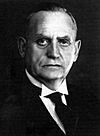 |
Sveinn Björnsson (1881–1952) |
17 June 1944 | 25 January 19522 | 7 years, 7 months, 8 days (2,778 days) |
1 (1944)1 | Björn Þórðarson Ólafur Thors Stefán Jóhann Stefánsson Ólafur Thors Steingrímur Steinþórsson |
| 2 (1945)3 | |||||||
| 3 (1949)3 | |||||||
| He was the Regent of Iceland from 1941 to 1944 before becoming the first president. He was the only president to die in office. When he passed away, the powers of the presidency were temporarily held by the prime minister, the president of Parliament, and the president of the Supreme Court. | |||||||
| 2 |  |
Ásgeir Ásgeirsson (1894–1972) |
1 August 1952 | 31 July 1968 | 16 years (5,844 days) |
4 (1952) | Steingrímur Steinþórsson Ólafur Thors Hermann Jónasson Emil Jónsson Ólafur Thors Bjarni Benediktsson Ólafur Thors Bjarni Benediktsson |
| 5 (1956)3 | |||||||
| 6 (1960)3 | |||||||
| 7 (1964)3 | |||||||
| He was the first president chosen by a public vote. | |||||||
| 3 |  |
Kristján Eldjárn (1916–1982) |
1 August 1968 | 31 July 1980 | 12 years (4,383 days) |
8 (1968) | Bjarni Benediktsson Jóhann Hafstein Ólafur Jóhannesson Geir Hallgrímsson Ólafur Jóhannesson Benedikt Sigurðsson Gröndal Gunnar Thoroddsen |
| 9 (1972)3 | |||||||
| 10 (1976)3 | |||||||
| At one point, he thought about forming a government that didn't need Parliament's support because party leaders couldn't agree. | |||||||
| 4 | 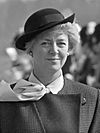 |
Vigdís Finnbogadóttir (born 1930) |
1 August 1980 | 31 July 1996 | 16 years (5,844 days) |
11 (1980) | Gunnar Thoroddsen Steingrímur Hermannsson Þorsteinn Pálsson Steingrímur Hermannsson Davíð Oddsson |
| 12 (1984)3 | |||||||
| 13 (1988) | |||||||
| 14 (1992)3 | |||||||
| She was the world's first elected female president. She won her first term with the lowest percentage of votes for a first-term election, but she won her third term in 1988 by a huge margin. | |||||||
| 5 | 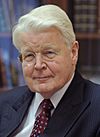 |
Ólafur Ragnar Grímsson (born 1943) |
1 August 1996 | 31 July 2016 | 20 years (7,305 days) |
15 (1996) | Davíð Oddsson Halldór Ásgrímsson Geir Haarde Jóhanna Sigurðardóttir Sigmundur Davíð Gunnlaugsson Sigurður Ingi Jóhannsson |
| 16 (2000)3 | |||||||
| 17 (2004) | |||||||
| 18 (2008)3 | |||||||
| 19 (2012) | |||||||
| He was the first president to use the constitutional veto power to refuse signing a law from the Parliament. He used it two more times. | |||||||
| 6 |  |
Guðni Thorlacius Jóhannesson (born 1968) |
1 August 2016 | 31 July 2024 | 8 years (2,921 days) |
20 (2016) | Sigurður Ingi Jóhannsson Bjarni Benediktsson Katrín Jakobsdóttir Bjarni Benediktsson |
| 21 (2020) | |||||||
| He won his second-term election in 2020 by a very large margin. | |||||||
| 7 |  |
Halla Tómasdóttir (born 1968) |
1 August 2024 | Incumbent | 1 year, 158 days | 22 (2024) | Bjarni Benediktsson Kristrún Frostadóttir |
| She won with the second lowest percentage of votes for a first-term election. This was her second time running for president; she came in second place in 2016. | |||||||
Timeline of Presidents
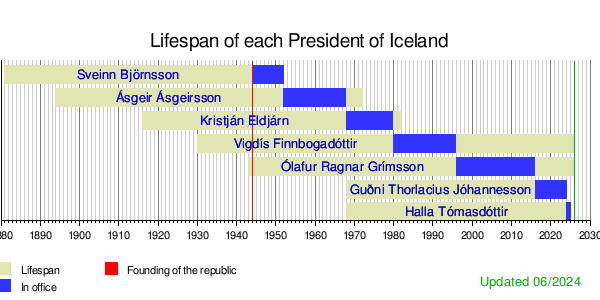
See also
 In Spanish: Presidente de Islandia para niños
In Spanish: Presidente de Islandia para niños
- List of rulers of Iceland
- List of spouses and partners of Icelandic presidents


